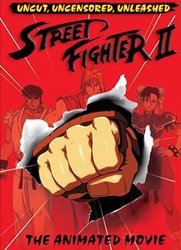Rating: |
Journal
Whether or not you are a fan of anime, you have probably seen something that has been influenced -- directly or indirectly -- by the movie Seven Samurai. The Magnificent Seven, Samurai Seven, even The Three Amigos, and A Bug's Life all share a similar plot line whose origins can be traced back to Akira Kurosawa's 1954 classic.
A small rice-farming village is threatened by a band of bandits who plan on pillaging the villagers' crop once it has been harvested. In an effort to save their livelihood, the villagers hire seven ronin samurai to help fend off the attack.
The plot, like I said, probably isn't anything you haven't seen before; and that may very well be this movie's downfall for many people. Despite the fact that this is the original, it's hard to watch it with the fresh mindset that people had back in the 50's when this kind of thing hadn't been seen before. And because of that, the plot may initially come off as predictable. But I think if you watch it all the way through there are a few aspect that stand out from a lot of contemporary films.
The first thing that stands out is that, despite the fact that it's a samurai movie, there isn't a lot of violence. The fighting doesn't really start until the last third (or so) of the movie when the bandits start to attack. And even then, the fighting is bloodless and comes in relatively short spurts. It seems to focus more on the strategy of fighting and the character's reaction to the fighting than anything else. There's no long-drawn out duels between key characters showing cool martial arts or sword-fighting techniques. There's only minimal violence as needed to tell the story, and that's about it. And I think that in itself makes it a better movie because the violence doesn't distract from the story.
The second thing that makes the movie exceptional is the characters. The two characters that stand out the most are Kambei and Kikuchiyo. Kambei is the de facto leader of the samurai. He's strong, experienced, wise, humble, and compassionate; all of which make him the most likable character of the group. I also think a lot of his likability has to do with the great acting by Takashi Shimura. The other noticeable character is Kikuchiyo. He stands out because even though he wants to be one of them, he lacks the nobility that the other samurai have. He comes off as brash and at times dim-witted, and because of his history as a farmer, I think he's like the bridge that connects the samurai with the villagers. The rest of the samurai get a kick out of his antics but also have a respect for his drive to help.
In fact, I think it's that cohesive relationship among all the samurai that is one of the things that makes the characters so appealing. They work together to come up with a plan to help the villagers, and don't bicker about who has the better strategy. It's not until one of them decides to act on his own that they really get into trouble.
The final thing that stands out (that I want to mention) is the ending. In the end, the samurai reach their goals, but not without sacrifice; and ultimately, they themselves gain little from the experience. It's that happy-but-not ending that I think makes the film more interesting because it flies in the face of a lot of Western-style storytelling that demands something more clear-cut.
Visually, Seven Samurai is about what you'd expect from a movie made in the 50's. The cinematography is good as far as the use of camera angles and the like. But the quality of the film is kind of crappy; meaning that you can see spots and stuff appear on the screen a lot. It didn't bothered me, but I can't help but wonder if there is a way to clean that kind of thing up these days.
The music was subtle and enhanced the scenes that it needed to, but again it's an old movie and the soundtrack sounds like it.
Overall, this is a classic movie with a solid story and likable characters and if you claim to be a movie buff then this is a must-see. However, some casual viewers may be bored by the familiar plot, long running-time, and dated look and sound -- which I guess I can understand. But for those who can appreciate the film's lineage and can watch it with a bit of perspective, then it's something that's well-worth watching.





